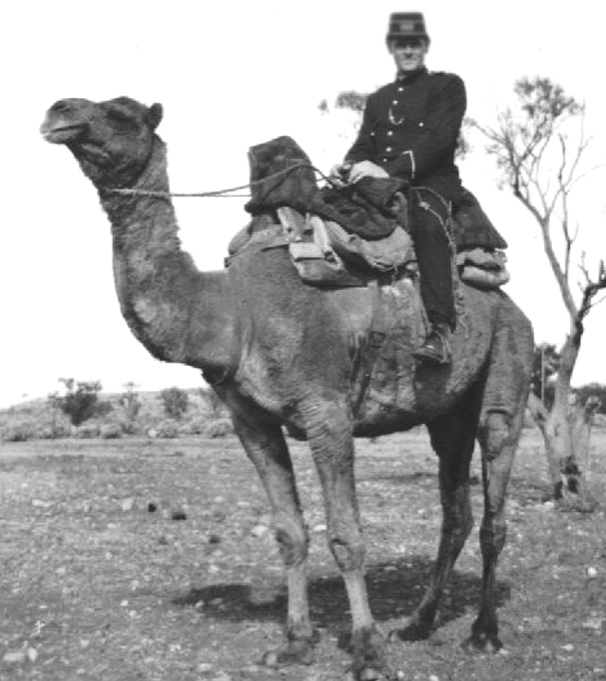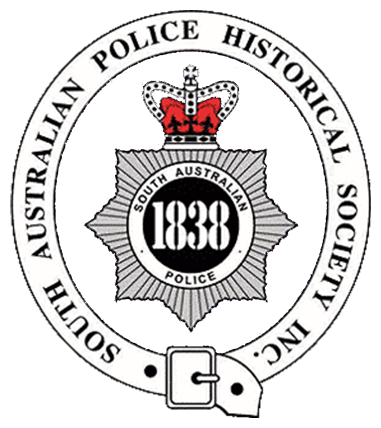
The provision of suitable transport for police officers to carry out patrol and other duties in the remote and arid areas of north and central Australia presented police with major challenges. As police services in the 1860’s extended further into the north of South Australia and central Australia, it was realised that the horse was not necessarily the best suited animal in such an extremely hot and dry environment. As a result, by the late 1870’s the use of camels for police work in South Australia was examined.
Camels had first been deployed in 1870 on the erection of the Overland Telegraph line between Adelaide and Darwin. The benefits of such animals over horses were quickly realised. There camels outperformed horses in the harsh inland environment due to their ability to transverse the sparse and waterless terrain of outback Australia and over time they affectionately became known as ‘ships of the desert’.
Due to their superiority over horses South Australia Police became the first police force in Australia to adopt the use of camels for police transport, when in 1880 SAPOL purchased ten camels for use by Mounted Police Constables stationed in the remote far north of South Australia and central Australia.
By 1885 this had been increased to 18 camels and they were now issued to police stations including Beltana, Marree, Oodnadatta, Diamantina, Farina, Tarcoola, Innamincka, Fowlers Bay and Penong. At that time Inspector Besley, Officer in Charge of the Police Northern Division, wrote of camels; “I found them to be suitable, safer and less expensive on the whole than horses for the far Northern Stations. The men like them better than horses, and in fact, they are the only safe animal to bridge over long tracts of waterless country so frequently met within the far North of the province and the South Western portion of Queensland. The pack camels can average 20 miles per day for months, carrying from 4 to 6 cwt, travelling six days per week. In saddle they go much quicker and further, and some of ours, after a long journey, travelled home 50 miles per day for the last four days. They are good in hilly or stony country and do not require shoes, but they excel in the sand hills. Anyone who is kind and firm can easily manage camels after a few days amongst them.”
In the years that followed the number of camels further increased and by 1889 there were 30. However, by the late 1920’s following the introduction of the motor vehicle, many police officers based at far northern police stations began to use their own motor cars for police patrol work in preference to camels, for which they were paid a vehicle allowance.
With conditions of outback roads having improved by the late 1940’s and the introduction of Land Rover four-wheel drive vehicles for use in outback police stations in South Australia, the ‘ships of the desert’ had become redundant. The last mention of camels owned by the Police Department was in 1951 when Police Commissioner Ivor Green reported; “Two teams of camels, comprising seven and eight camels respectively, were sold during the year. Camels are no longer maintained by the Police Department”.
This formally ended the Police Department’s use of camels as a means of transport, with Marree Police Station being the last to use them. It was a sad ending to a unique era of police transport. For over 70 years camels had served SAPOL well and provided a safe, efficient and effective alternative means of transport in the harsh, arid and remote areas of outback South Australia.
